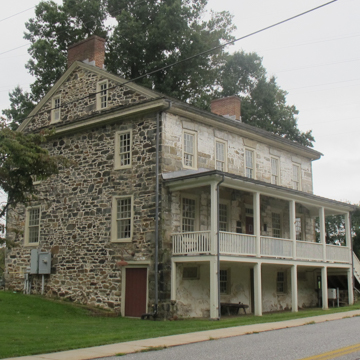This Georgian building is the sole survivor of the early settlement of this area, facilitated by travel along the post road between Baltimore and Philadelphia. The stone tavern sits along the east bank of the Susquehanna River, near the site of the ferry established in 1695, linking what later became Perryville and Havre de Grace. Opening as the Ferry House, it was purchased in 1780 by John Rodgers. It became a favorite stopping place for such notable Revolutionary War figures as George Washington and French generals Lafayette and Rochambeau. It was purchased by the Society for the Preservation of Maryland Antiquities in 1956 and serves as a museum, telling the stories of period travelers and residents during an important chapter in American history.
You are here
RODGERS TAVERN MUSEUM (RODGERS TAVERN)
If SAH Archipedia has been useful to you, please consider supporting it.
SAH Archipedia tells the story of the United States through its buildings, landscapes, and cities. This freely available resource empowers the public with authoritative knowledge that deepens their understanding and appreciation of the built environment. But the Society of Architectural Historians, which created SAH Archipedia with University of Virginia Press, needs your support to maintain the high-caliber research, writing, photography, cartography, editing, design, and programming that make SAH Archipedia a trusted online resource available to all who value the history of place, heritage tourism, and learning.


